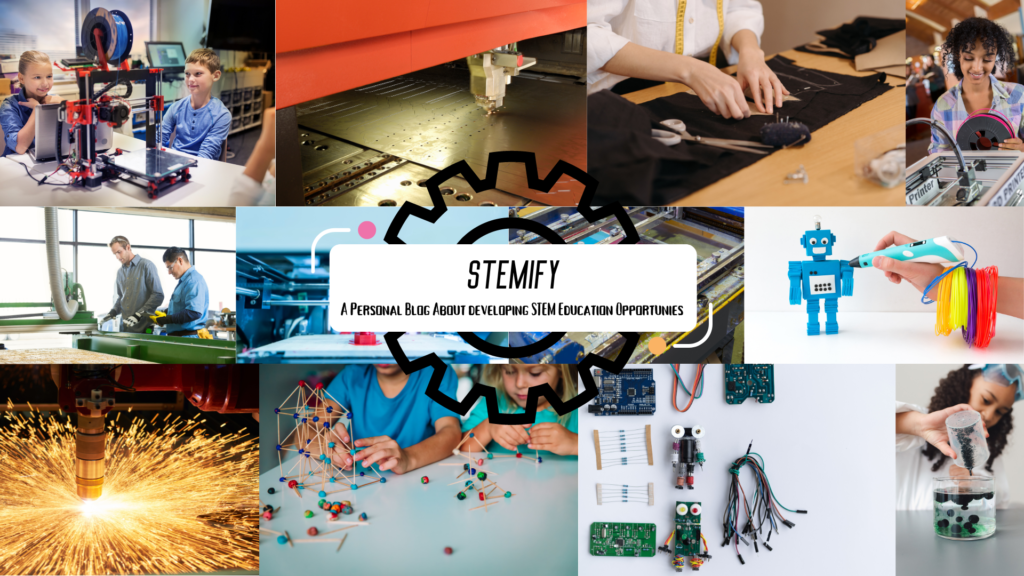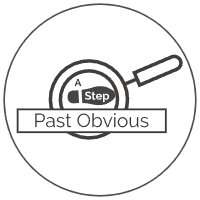Stemify: Importance of Creative Thinking on Young Minds
The issue with creative thinking, how we deal with it, and how we teach it
By: Ryder Clark | Published 3/11/2024

Image credit to https://www.shutterstock.com/
Part One: The Issue
Imagination has been, and always will be, fundamental to human existence. Imagination in and of itself is what separates our species. What makes us special. Imagination makes us more than just simple programmed bodies. It lets us explore new worlds and craft the stories of people who will never exist. The ability to create and combine ideas into completely new ones is innately human. Throughout our history many have explored the imagination. The humanist movement, which fueled the renaissance expressed the infinite potential of humans and the human form. The art and architecture of our history expressed the imagined potential and interpretations of the world. But today, in a world where any information is at a person’s fingertips this ability central to human existence is fading.
Maybe it’s our world’s shift to uniformity in its architecture and cities. Maybe it’s the progression of technology. Regardless of what has caused it, imagination and creative thought are in decline, and we are doing little about it. We have failed to adapt to the modern age. Our classrooms continue to look the same as they did hundreds of years ago. Our system has not moved with the times but rather attempted to pull the time backwards. We are continuing to try and teach a generation, which lives in a new digital world, using methods from a world which could not conceive of a pocket calculator.
In today’s world the most valuable commodity is, and continues to be, creative thought. We are faced with some of the biggest issues the world has seen: climate change, the rise of AI, rising sea levels, food shortages, and poverty, and every single one requires a solution. If these could be solved simply they would’ve already been solved. Instead it is these issues which create the demand for creative thought. We need thinkers who can see beyond the limits of established perspectives into new ideas. And we need these ideas to be credible. For this to happen we need new, well-rounded thinkers. We cannot continue to produce singularly specialized individuals, unknowing across field lines. In our world knowledge is power, and knowledge is at our fingertips, we must produce individuals who are able to analyze and use it. If our thinkers are confined to one subject how can they think beyond the lines of their field to solve the complex issues that face us.
Part Two: Creative Thinking-To think it and to teach it
When we are discussing creative thought we must talk about what the term means. Creative thinking refers to the application of learned ideas to either model them in a new way or to form new ideas or analyses. It could mean crafting an art piece, which is inherently creative, but it can also mean analyzing the results of a chemistry lab based on learned knowledge. Most of all creative thinking is seen in any case of problem solving. To solve a problem, knowledge must be applied in a novel way. This way of learning gets students to look beyond the pages of memorized terms and toward how they interact and affect the world around them.
But what benefits does thinking creatively provide? It provides the ability to deal with the real world. It teaches problem solving methods. It teaches collaboration with other people and other ideas, inspiring compromise. It motivates idea generation and “mental prototyping”, the process by which one can run through ideas and designs in one’s head to form a solution or answer. Along with these, it encourages self-expression. It allows the imagination to thrive, alongside knowledge and rationalism. It allows individuals to discover who they are. Lastly it encourages another level of engagement from students with topics. When students have to think critically within a subject they are able to apply their own thoughts and relate to the topic. This causes them to invest more of themselves and engage closer with the problem or task at hand. Altogether creative thought encourages the expansion of a student’s ability to think and learn.
So then what does it mean to teach creative thought? While imagination might be inherent, thinking critically and creatively about subjects is not. Students tend to take the easy way out as their brain seeks simple answers. Teaching creative thought means creating a behavior change in the brain. In teaching it, one must overcome students’ natural mental patterns and foster the use of their imagination and creative skills. You are reprogramming the way the brain thinks. Forcing it to reach its full potential. This is not easy, but in our world it is quickly becoming necessary.
Part Three: How Do We Teach It?
The most important aspect of creative thought discussed so far is the ability to tie new ideas directly to established knowledge and information. Not just one fact but a broad scope of ideas. If we are then talking about teaching creative thought there is no option other than implementing it in our traditional subject classes. Many classrooms already do this. However whether it’s in an honors class or gifted program many of these situations which ask for creative or critical thinking are not expanded to everyone. Yet it is all students who need to learn these skills. All students are owed to be taught an awareness of their world and to be taught a method for investigating it. This will come from teaching critical thinking to all, and by keeping what students are learning relatable to the world they live in. If students care about what they learn, like previously stated, they will engage deeper with it.
One thing teaching is not, is telling. This is why I feel that a proposed separate class dedicated to forming these skills in teens misses the mark. It sucks out any aspect that might draw a connection between knowledge and using it to think critically. We must allow students to discover. We must fuel their whims. We must encourage their curiosity. We must provide them with real issues and ask for solutions. The public math curriculum posted by Phillips Exeter Academy each year is a great representation of the tie between a subject like mathematics and problem solving. In a PEA math textbook students encounter a constant set of word problems. There are no separate explanations which tell students how to solve specific types of problems before they explore topics themselves. Instead the curriculum encourages students to solve problems and discover their own methodology through relatable word problems developed by former students. The class curriculum asks students to present their findings like one might present a proposal to a business or a solution in a meeting. It adds a layer to the subject, making students think critically about relatable situations, solve problems, and then asking them to present their solution. The PEA program is a great example of not just telling students but teaching by encouraging discovery and thought. If we want to teach the next generation to ask questions, to seek the issues around them, we must continue to fuel that spark of childhood curiosity that lies within and allow them to discover the world themselves.
Today a big question facing teachers is how to use technology in the classroom. Programs like Chat-GPT have scared many teachers away from technology in the classroom altogether. The issue is that in the real world technology is integral to daily life and work. Technology is a tool the world makes use of, why shouldn’t a classroom? And classrooms have made use of it. Many schools now use LMS(learning management system) programs to monitor assignments and grades, and ever evolving Promethean Boards to visualize topics for a class. Classes in computer science and design are on the rise in many areas. But the digital divide, as the divide between those who are able to use technology and those who aren’t is known, still exists. It exists on such a grand scale that it is one of the five main topics of the AP Computer Science Principles test. If we are going to be training the next generation, active work must be taken to also teach them how to use technology and erase the digital divide.
One of the most important first steps is to train teachers, with real classes, on the purpose and uses of computer programs and devices. Training in programs like Chat-GPT can reveal its use in providing sources and outlines in quick, real time. It also will make teachers aware that they ought to teach their students about the fact that AI programs often spit out false information, and that a fact check is crucial. If teachers had no training they would be lost to all of these important ideas that the teenagers who will grow to use these programs ought to be taught. Technology is also a platform. Social media and other group messaging sites allow people to make connections in the world. Yes they create many issues with teenagers, but students must be taught how to use their resources for good to know how not to use them. More than anything, if we are not educating the next generation on how to use websites, AI programs, and even social media, how can we expect them to make the most of the world they live in to solve issues? If we are not educating them we are attempting to place students in a world without technology and asking them to solve the same problems we faced then. That is as futile as it sounds. We must encourage creative thought to flourish.
We must actively work to realize the behavior change. Implementing new projects introducing critical thinking to all classrooms is a first step. We cannot allow students to be lost to problem solving in their classes. Reinforcing it with modern ideas and technology is the next step. Students must know how to access the world around them, to be able to interact with it. This whole time we must be also working to make classes more relatable. We cannot let the same lessons continue on just because they’re easy to teach. The first step to solving climate change, or rising sea levels is in the classroom. Education forms the basis for thought for the rest of a person’s life. We must propel the next generation, the one we have placed so much hope in, and do our role of educating them to the best of our ability. This means implementing creative thought in schools. Knowledge is step one. It’s the block of marble. Critical, creative thought is the chisel that sculpts the medium into a masterpiece.
-----Resources-----
Drexel University School of Education. (2018). How to Inspire Creativity in the Classroom – School of Education. Drexel University. Retrieved March 11, 2024, from https://drexel.edu/soe/resources/teacher-resources/inspire-creativity-in-the-classroom/
Krueger, N. (2022, October 5). 5 reasons why it’s more important than ever to teach…. ISTE. Retrieved March 11, 2024, from https://iste.org/blog/5-reasons-why-it-is-more-important-than-ever-to-teach-creativity
Phillips Exeter Academy. (2023). Math Teaching Materials. Phillips Exeter Academy. Retrieved March 11, 2024, from https://www.exeter.edu/mathproblems
PISA, OECD division. (2021). Creative Thinking – PISA. OECD. Retrieved March 11, 2024, from https://www.oecd.org/pisa/innovation/creative-thinking/
Veno, E. (2023, March 24). Why is Creativity Important in Education? Prisma Online School. Retrieved March 11, 2024, from https://www.joinprisma.com/blog/why-is-creativity-important-in-education

